PRIVATE GARDENS are both art and autobiography, a landscape of self-expression combined with a love for natural beauty. As the great artist and garden-maker Claude Monet once observed: “I perhaps owe becoming a painter to flowers. My garden is my most beautiful masterpiece.”
As a gay woman and plant aficionado, I’ve explored the homes and gardens of the painter Frida Kahlo (1907–1954) and the writer Vita Sackville-West (1892–1962). Besides their creative output and remarkable life stories, I admire their gardens as masterpieces of style and design that draw worldwide visitors. From childhood, Kahlo resided in a house known as “La Casa Azul” in Coyoacán, a suburb of Mexico City; while Sackville-West acquired a historic estate, Sissinghurst, nestled in the bucolic county of Kent in Southeast England.
Both women had an unabashed swagger when dressed in attire considered masculine in their day. Omnivorous in sexual matters, Frida Kahlo had affairs with a number of notable women, including Josephine Baker, the stunning African-American entertainer; film actress Paulette Goddard; artist Georgia O’Keeffe; and photographer Tina Modotti. She married the muralist Diego Rivera, whose constant womanizing led to an anguished divorce.
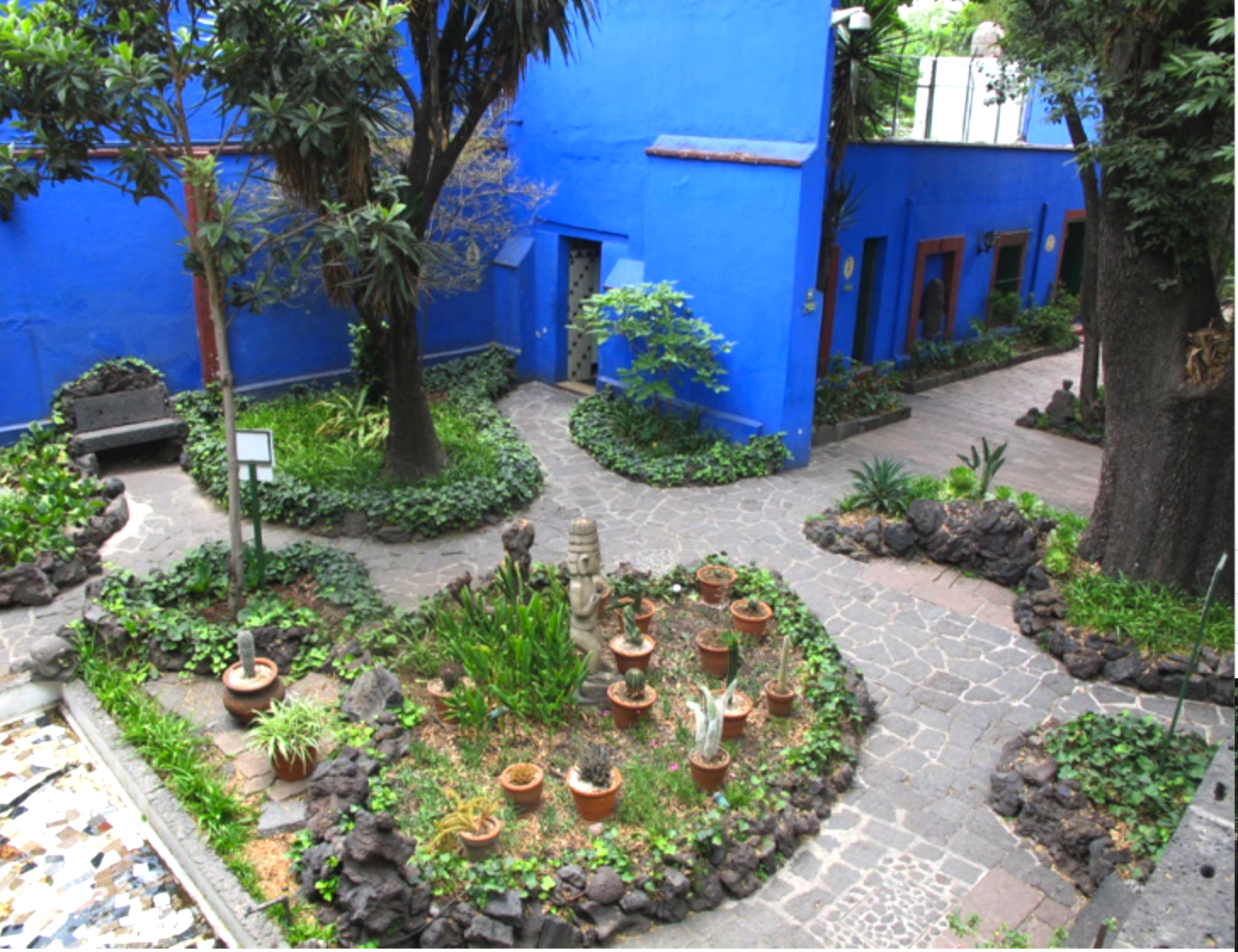
Vita Sackville-West married diplomat Harold Nicholson in 1913. It gave the couple an abiding friendship, children, and cover in homophobic England for their nonconforming sex lives. Sackville-West had two great amours: a lengthy relationship with Violet Trefusis, an English socialite; and later with novelist Virginia Woolf. She would become the inspiration for Woolf’s extraordinary novel Orlando, which chronicled the adventures of a poet who changes from male to female and lives for centuries.
La Casa Azul was the family home where Kahlo grew up. When Rivera lived there during their marriage, they maintained separate quarters and studios, linked by a bridge. At Sissinghurst, Sackville-West had a lofty Elizabethan tower all to herself, where she could study, write, and survey her garden creation. Both women’s gardens attest to considerable horticultural knowledge, combined with an artist’s eye for design and æsthetics.
As a visual artist, Kahlo represented the natural world in her art. Animals and plants of her native Tehuanan culture and post-conquest Mexico were frequent subjects or elements of her works. Kahlo combined realism with allegory, referencing both Mexico’s cultural heritage and her own life, which was marked by unremitting physical pain from a bus accident when she was eighteen.
Her self-portraits included pets that she kept at La Casa Azul, such as spider monkeys, parrots, and a Mexican hairless dog. Her plant-inspired paintings were often filled with sexual and cultural symbols, expressing her wit and love of visual puns. She would even create characters that were half-plant, half human, based on herself and those around her. Sometimes her favorite plants were rendered with thorns or pierced by needles, representing the torture of her physical injuries and rejection in love.
La Casa Azul is a courtyard garden set with irregular flagstones, redolent of Spain but imbued with native Mexican ideas. It’s enclosed by high walls painted an intense blue with scarlet window trims. The garden overflows with terracotta pots, statues of ancient gods, pomegranate trees, and native tropical and desert plants. In her lifetime, this was a noisy place, where her menagerie of pets wandered. Today, in a world beset with climate change, Kahlo should be recognized as an inspiring pioneer of the dry garden, decades before others took it up. She found beauty in the texture, shape, and color of native plants that thrive with little water.
Her garden also proclaims Kahlo as a knowledgeable plant collector. As a child, she gathered specimens from parks and open spaces, studying them with the aid of botanical field guides. Like Monet, she featured her favorite plants in her art, including cactus plants that are native to Mexico. At La Casa Azul, yam vines climb upwards on the wall outside of her bedroom. She often grew marigolds, which are associated with the Mexican holiday Día de los Muertos (Day of the Dead). Other favorites include elephant ear plants, bougainvillea with its shower of carmine flowers, philodendrons, yucca, and canna lilies.
Casa Azul has qualities of an art installation, a figurative statement about what mattered to Kahlo. She liked to press flowers in the pages of her books. After she died, a tiny bouquet was discovered in her copy of Whitman’s Leaves of Grass.
To my knowledge, there’s only one internationally famous garden that was created by a married couple with secret gay lives. That would be the Sissinghurst Castle Gardens of Vita Sackville-West and Sir Harold Nicolson. The daughter of old nobility, Sackville-West acquired a ruined Elizabethan manor house in 1930, and the couple spent decades creating the garden and renovating the house. Sissinghurst is considered one of the most influential gardens in England, open to the public and managed by the National Trust.
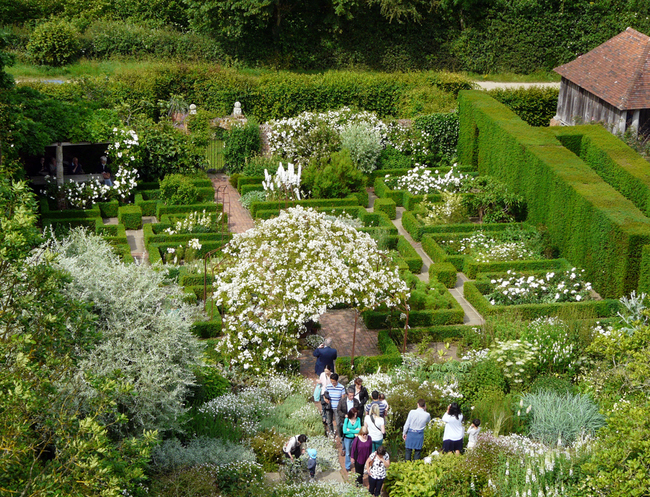
After years of clearing debris, Harold provided the architectural structure for the garden, with strong classical lines that would frame his wife’s pioneering planting ideas. She poured all her creativity into Sissinghurst. For her, gardening was always about beauty. Besides being a successful novelist, poet, and diarist, she began writing newspaper articles in 1946 about Sissinghurst and giving gardening advice that was eagerly read by professionals and the public. She is known to have trained and hired gay women for her gardening staff.
Sissinghurst Castle has an original Elizabethan tower, which was her study and library. Visitors today can climb the stairs to take in the five-acre garden as Sackville-West would have seen it. From above, the enclosures or “rooms” that divide Sissinghurst can clearly be seen. Sackville-West and her garden designer friend Lawrence Johnston discarded the norm of the day, which was to have a single style for the entire garden, instead dividing it into ten areas with different themes, such as the White Garden, the Rose Garden, the Orchard, and the Nuttery. Some have sculptures, fountains, or topiary enclosed by walls or hedges, so everything cannot be seen at once.
Sackville-West created the first monochromatic garden rooms, notably the White Garden. With Harold’s classical lines, she let the planting be exuberant, engulfing, and romantic. Self-seeded plants grow where they naturally fall, wild flowers with cultivated plants—a revolt against manicured Victorian formality. Her favorite plants include many varieties of irises, clematis, and roses. The Rose Garden celebrates heritage roses for their loveliness and scent, such as the Adélaïde d’Orléans, a white rambler rose that climbs on a pergola or trellis with delicate flowers that hang like jewels, and the Cardinal de Richelieu, favored for its sumptuous velvet-purple flowers. The White Garden utilizes white-flowering varieties of delphiniums, lilies, roses, and hydrangeas. The borders are set off brilliantly by Harold’s formal yew and box hedging.
Kahlo at La Casa Azul and Sackville-West at Sissinghurst truly became artist-gardeners in a bewitching combination of wildness and restraint, all passion spent on their astonishing and memorable visual spaces. Their gardens have inspired my own. During the pandemic, my love of gardening has flourished, giving me so much comfort, purpose, and joy, as Kahlo and Sackville-West surely found in theirs.
Emily L. Quint Freeman is the author of the recent memoir Failure to Appear: Resistance, Identity and Loss (Blue Beacon Books), as well as many other essays.


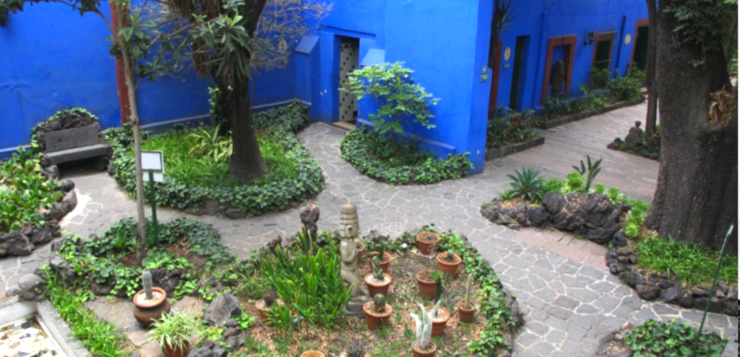

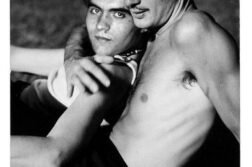
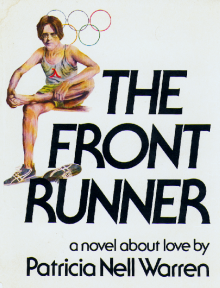
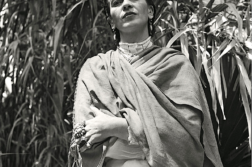
Discussion1 Comment
Wonderful article about these magnificent women artists!
However the reference to CANNA LILIES is incorrect. Cannas are not lilies
but it may be the writer meant Calla lilies (which is correct).
Thanks for this great article.